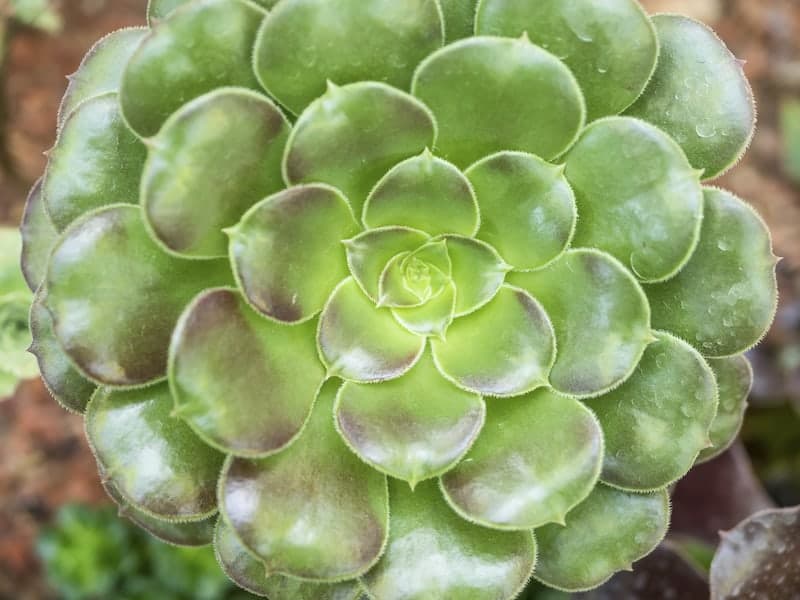
Here is the ultimate guide to growing aeonium urbicum succulents. Everything you need to know about caring for this succulent plant is in this post. Enjoy and happy growing!
Jump to:
Description
| Name: | Aeonium Urbicum |
| Soil: | Potting soil with perlite |
| Blooming: | Spring |
| Light: | Full sun to partial shade |
| Water: | When the soil is completely dry |
| Propagation: | Cuttings, offsets and seeds |
The aeonium urbicum succulent plant is native to the island of Tenerife. It is a very rare succulent that is not spotted in the wild very often.
You might have heard the aeonium urbicum plant being referred to as the saucer plant as its thick bright lime leaves grow in a flat flower formation that looks like a flying saucer. For the purpose of this article, I will be referring to aeonium urbicum as the saucer plant.
For most of the year, the saucer plant is bright green in color; however, it may sometimes turn deep red at the tip of its leaves. This happens when the plant is under stress.
Pink and white flowers bloom in the summer from the large rosettes that can grow up to 20-inches in diameter. If you plant your saucer plant in the ground, it could grow as tall as 6-feet tall if you care for it correctly.
Cultivars and Hybrids
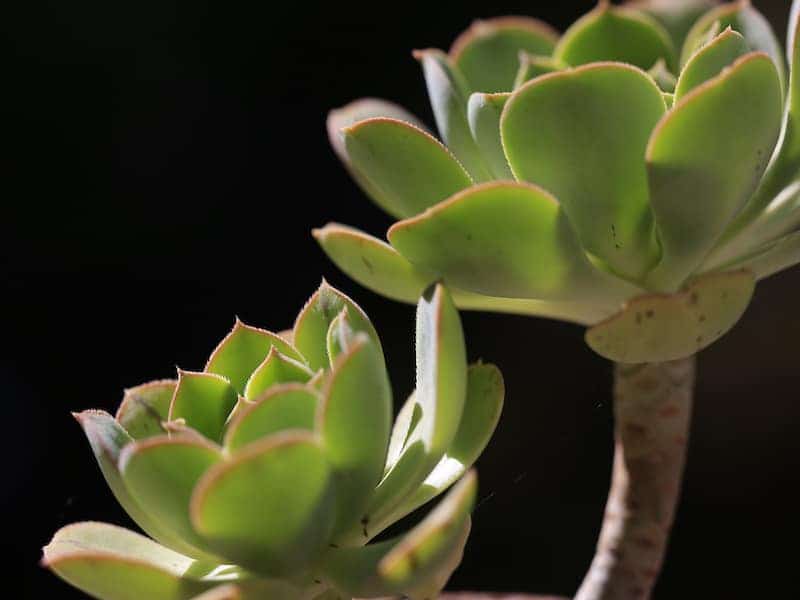
Buy it from:
There are a handful of aeonium hybrids available to succulent growers. These varieties display shorter stems or smaller rosettes than the saucer plant. Here is a list of the most popular aeonium hybrids available to you:
- Aeonium arboreum
- Aeonium arboreum 'Atropurpureum'
- Aeonium arboreum 'Zwartkop'
- Aeonium 'Garnet'
- Aeonium davidbramwelli 'Sunburst'
- Aeonium haworthii 'Tricolor' or 'Kiwi'
Care
No products found.
Growing saucer plants in warm climates is a delight, and they can be planted in the ground and grown as perennials with little fuss. Regardless of if you live in a warm or cool climate, you should take note of the following tips to ensure your aeonium urbicum grows to its full potential.
One thing you should know about saucer plants is that it isn’t a sun-worshiping plant like most succulent species. This succulent will not grow well in extreme heat or in very dry climates but don’t worry; there is always a way around that! Read the following care instructions to learn more.
Light
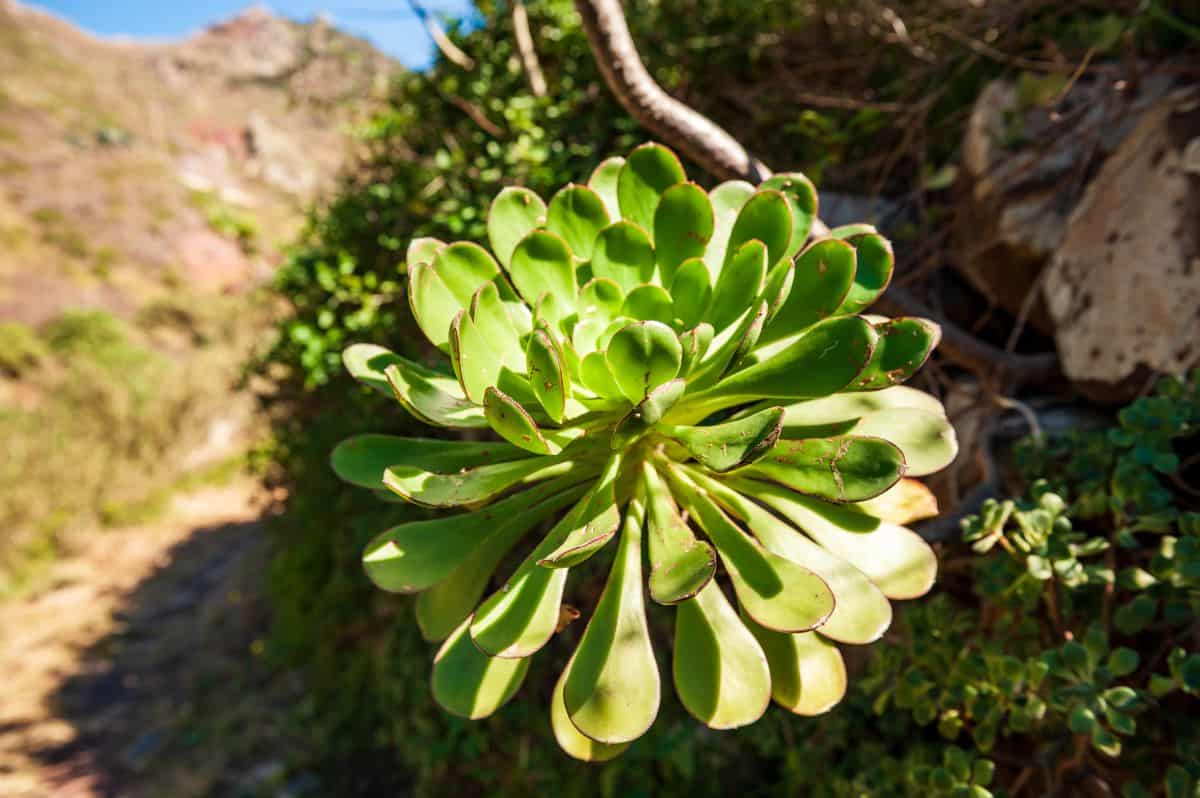
If you live in a very sunny and mild location, you can plant your succulent in direct sunlight or partial shade. The saucer plant will thrive in a moderate climate with plenty of sunlight.
Anyone looking to grow aeonium urbicum in desert conditions (much like the climate in Las Vegas and other desert-like areas) should consider growing their plant inside or with sufficient shade and protection.
Water
Be very careful not to over-water your plant as this could cause its roots to rot, which is a common succulent killer. During the winter months, water the saucer plant when the first inch of soil is completely dry.
Temperature
These succulents are hardy in USA zones 9 to 11. A Mediterranean climate is ideal for growing saucer plants as they need moderate heat, humidity, and sunlight to grow.
Soil
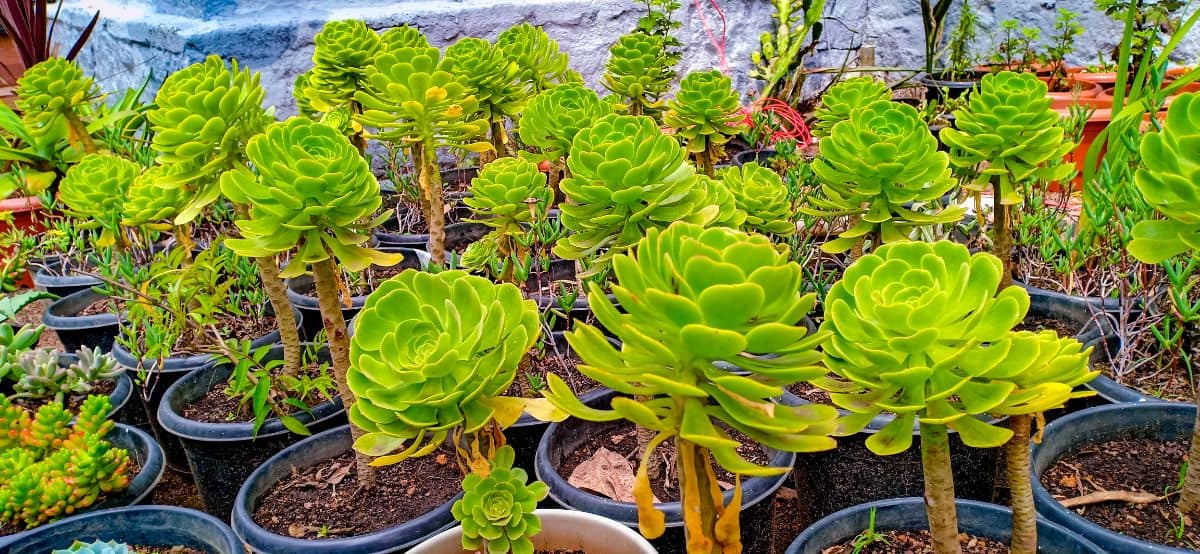
Aeonium urbicum needs more moisture in the soil than other succulent species, so planting them in succulent or cacti potting soil could be very detrimental to them. You can amend regular shop-bought potting soil with perlite or plant your saucer plant in sandy loam.
Propagation
You will be pleased to learn that these succulents are extremely easy to propagate. Propagating your plant is a fun and fulfilling thing to do; however, it does take plenty of practice. Here is a propagation guide got you to follow:
- Cut off a healthy stem with a leafy rosette from the main plant.
- Leave the cutting to heal and dry out for about four days.
- Place a mixture of potting soil and cactus soil in a well-drained pot and plant your cutting. Take a look at this post to learn why choosing the right pot is vital for your plant’s health.
- Place the pot in indirect sunlight and water it once every week.
Seeds
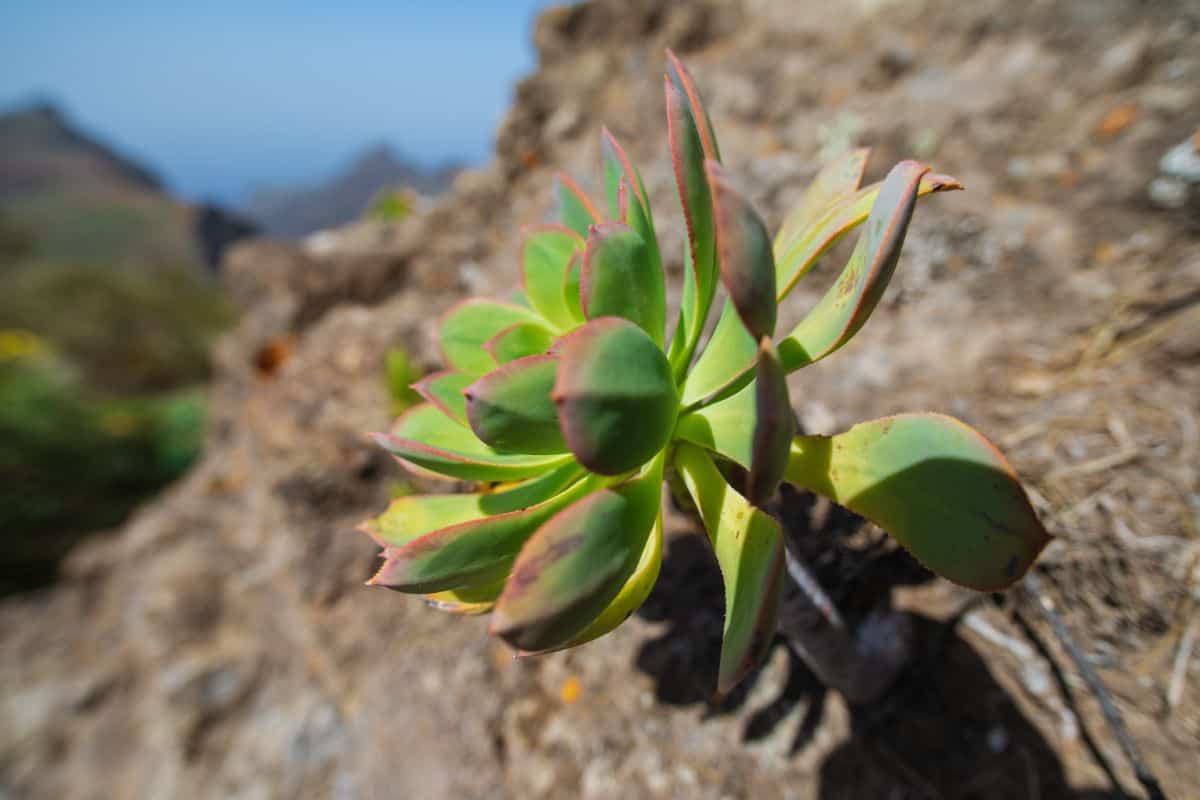
Aeonium urbicum is easy to grow from seeds; however, you should plant more seeds than you want as not all of them will germinate. These seeds will only germinate in temperatures above 25 degrees celsius.
Cuttings
Saucer plants are propagated from cuttings, so it is perfectly fine to remove healthy cuttings from your plant. You should also remove unhealthy parts of the plant whenever you see them developing to keep your succulent healthy.
Offsets
You will see offsets growing from the parent plant when your succulent is healthy. If you want to remove the offsets and re-pot them in another container, you can easily. Here is how to do it:
- Carefully remove the offset from the main brach with a sharp and clean knife.
- Let the offset dry out for three or four days.
- Plant the offset in well-drained propagating soil and wait a few days before watering the offset.
- Water when the soil is dry until the offset has grown strong roots.
Common Pests and Problems
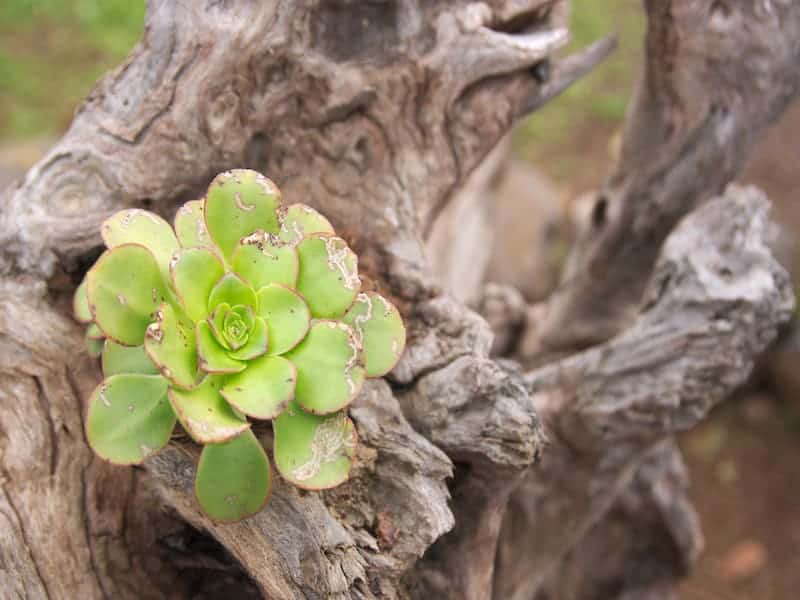
Aphids and mealybugs love aeonium urbicum succulent plants. Squirrels are also prone to nibbling at these juicy succulents, which is a big problem for anyone growing their succulents outside.
Other than ensuring you do not overwater your plant, saucer plants that are grown indoors do not come across many issues or hurdles. You should look out for discoloration signs of wilting as this is a common sign of sun deprivation or overwatering.
Always check your plant for holes or signs of pests. Succulents are not generally prone to pests, but aeonium urbicum sometimes gets infested, and catching the culprit in time is a must.
Look for bugs and pests lurking around the plant’s base and check to see if gnats or flies are hovering around the plant. There are plenty of natural pesticides that are great at deterring pests from your plants, so act fast and do not hesitate to treat your succulent!
Sources: https://web.extension.illinois.edu/containergardening/choosing_drainage.cfm


